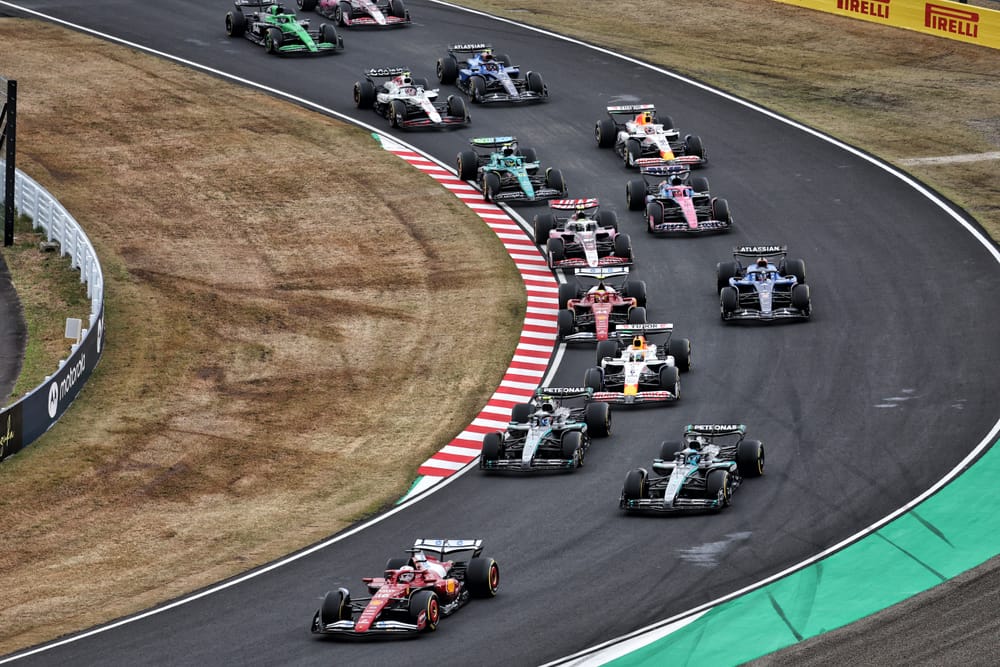

No podium in a main grand prix from the first three races, already losing touch with the leaders in the constructors' championship and that blow of a double disqualification from the Chinese Grand Prix.
It is fair to say that Ferrari's start to the Formula 1 season is a world away from how it wanted things to have kicked off.
Team principal Fred Vasseur certainly sees the irony in Ferrari having delivered exactly the opposite of what it had targeted.
"I'm amused because the last two years we [also] started like this," he said after the Japanese Grand Prix.
Ferrari after three rounds
2023
4th in constructors'
26 points
97 points behind Red Bull
2024
2nd in constructors'
93 points
4 points behind Red Bull (was 38 points back before Australia 1-2)
2025
4th in constructors'
35 points
76 points behind McLaren
But while it has not been an easy time for Ferrari, Vasseur is still trying to see things from a 'glass half full' perspective.
He reckons the performance is much closer relative to the front of the field than it was 12 months ago - and that if Ferrari can find the car balance gains it needs, then it can kickstart its title ambitions.
From his estimation of Ferrari being six tenths adrift of Red Bull 12 months ago, he thinks the squad has cut that gap in half - even if that gain has not manifested itself in moving up the order much.
On Sunday night in Japan, he said: "The average picture is that we are two-to-three tenths behind pole position and perhaps two-three tenths behind [in the race]. It's a good picture and we have to work from there."
But is that gap still too big to be closed?
The ride height question
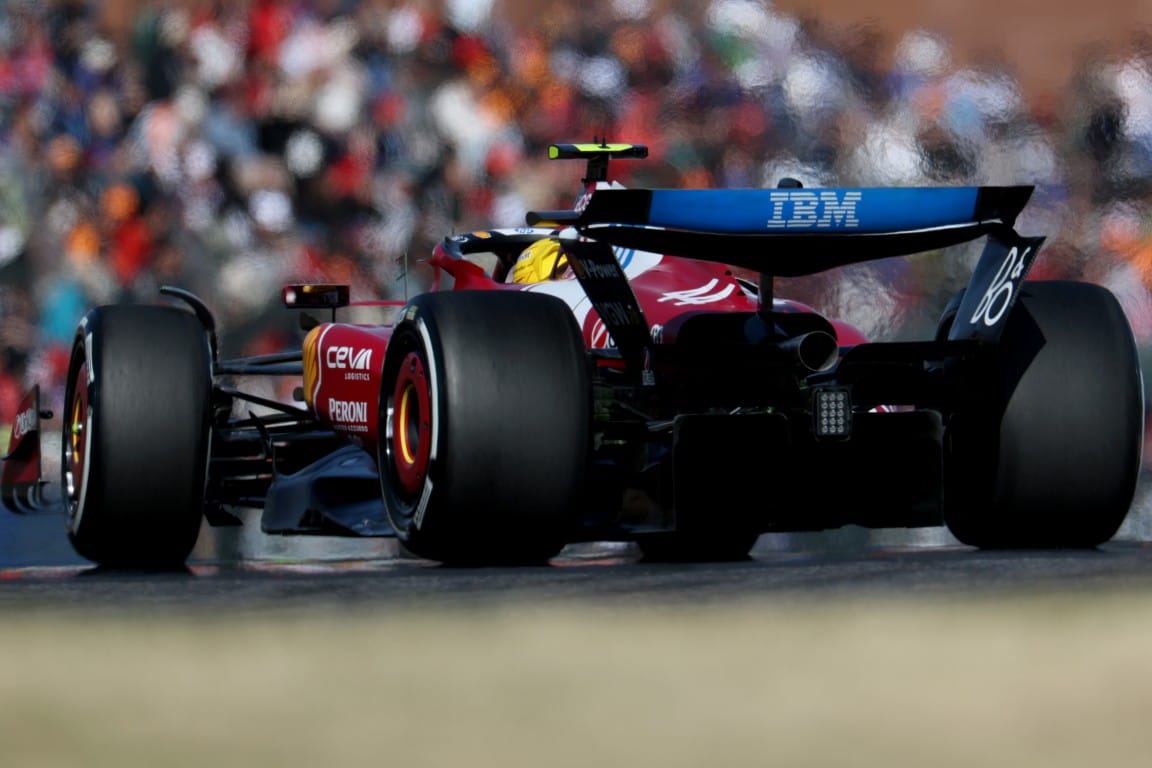
Ferrari's start to the season appears to have been dominated by it failing to get its car into the right set-up window that it needs to deliver performance at both high and low speeds.
From the outside, the focus of this struggle has revolved around its ride height - and this theory gained traction after Lewis Hamilton was disqualified for a worn plank in China due to the team running its car too low.
For Japan, as Hamilton revealed to Sky Sports F1, the team had had to be a bit more conservative in lifting things up - leaving performance on the table.
"We are running higher than we would like," he said. 'I don't know if everyone is in the same boat in that respect, but particularly obviously after the last race, we're a bit higher than we want to be."
But Ferrari's situation is much more complicated than it simply wanting to run its car lower to the ground by one or two millimetres to get it in the perfect window.
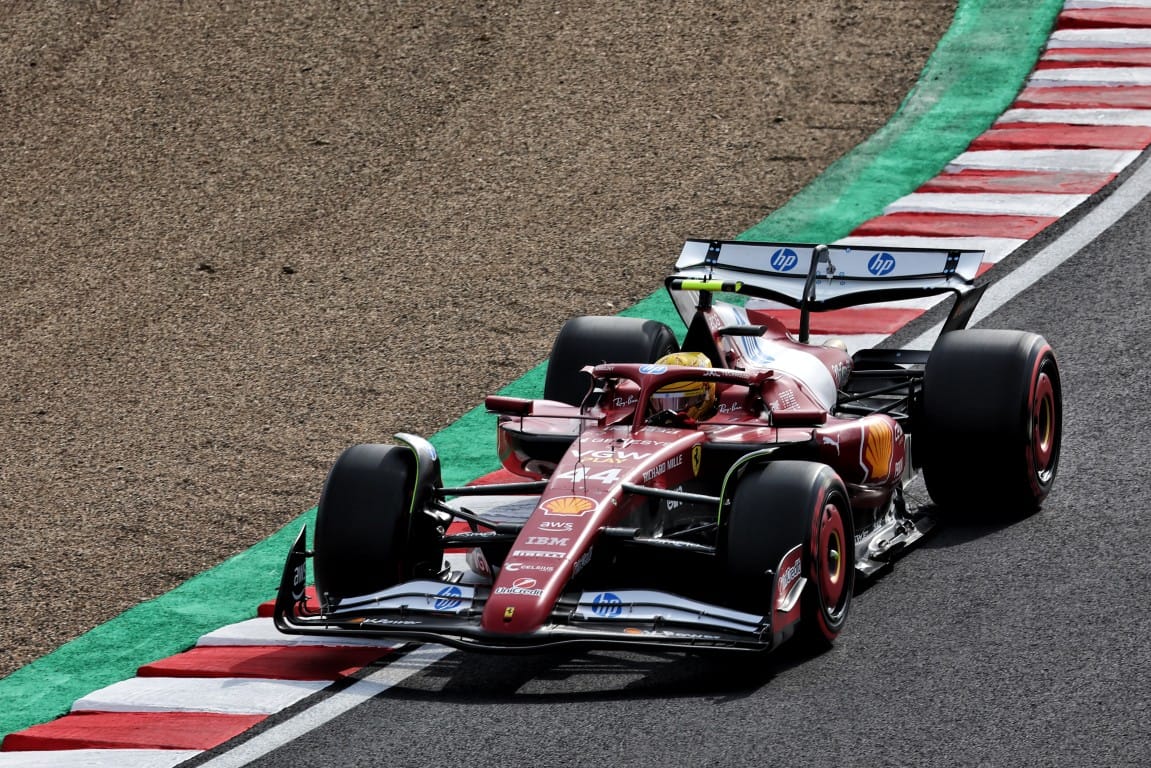
After all, as Vasseur has been eager to point out, this is the problem that every team up and down the pitlane is facing.
"We all want to run the car lower, we have all more downforce in this situation, and for everybody it's much better," he explained.
"But there is a limit. The limit is bottoming and the limit is the regulation. We all spend the weekend to find where the limit is, where can we run the car a bit lower, and then you are too low.
"It's the same for everybody, and we all know that with this kind of car performance is a lot linked to the ride height. It's true for us, it's true for everybody, and it's true today but it was true the last two years.
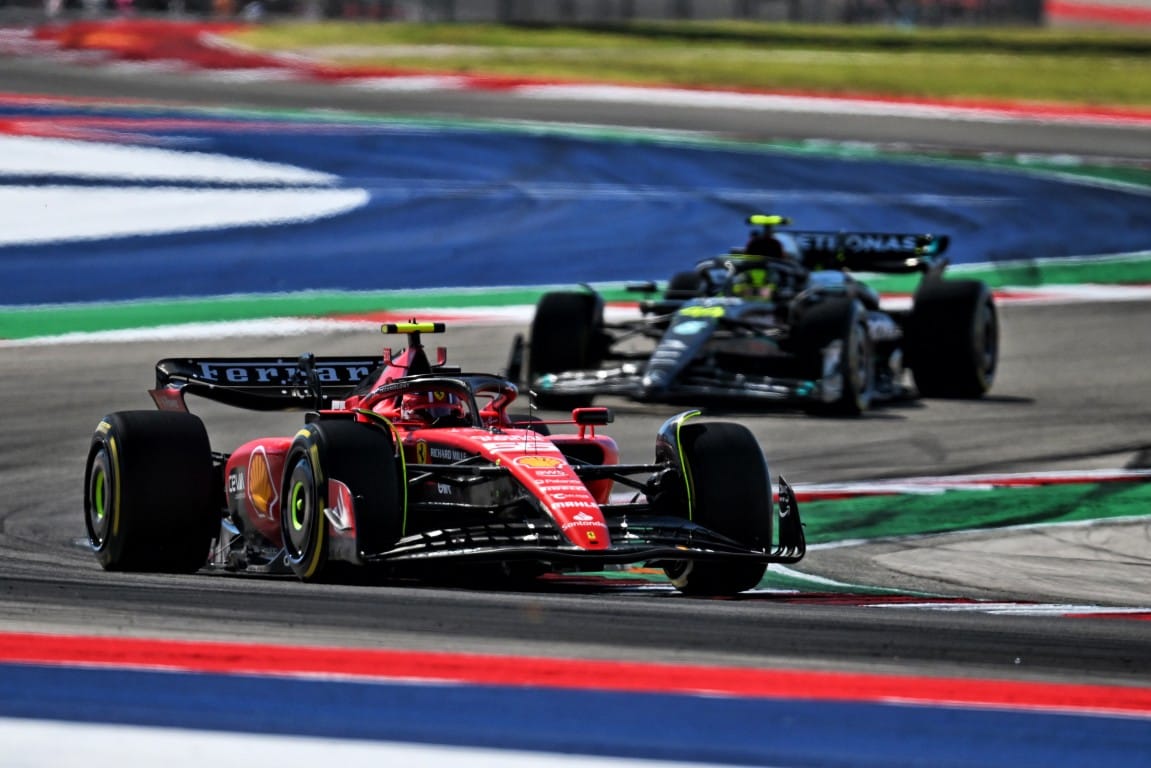
"If we were disqualified in Austin '23 with Mercedes [for excessive plank wear], it was because we are trying to reach the same point. And it's not a characteristic of the car of this year or a characteristic of the Ferrari. It's true for all the field."
What Ferrari's key challenge appears to be is in finding a strong balance through the different ride height ranges that comes from low- and high-speed corners without this then triggering its plank getting worn too much over a race distance.
So, thrown on top of the chase for the perfect set-up is that it needs to optimise this for when the car is full of 110kg of fuel for the start of the race - so is more prone to bottoming through the extra mass, which then, again, risks wearing the plank down too much.
And looking after the plank is the priority, even if it means sacrificing the perfect set-up from a performance perspective.
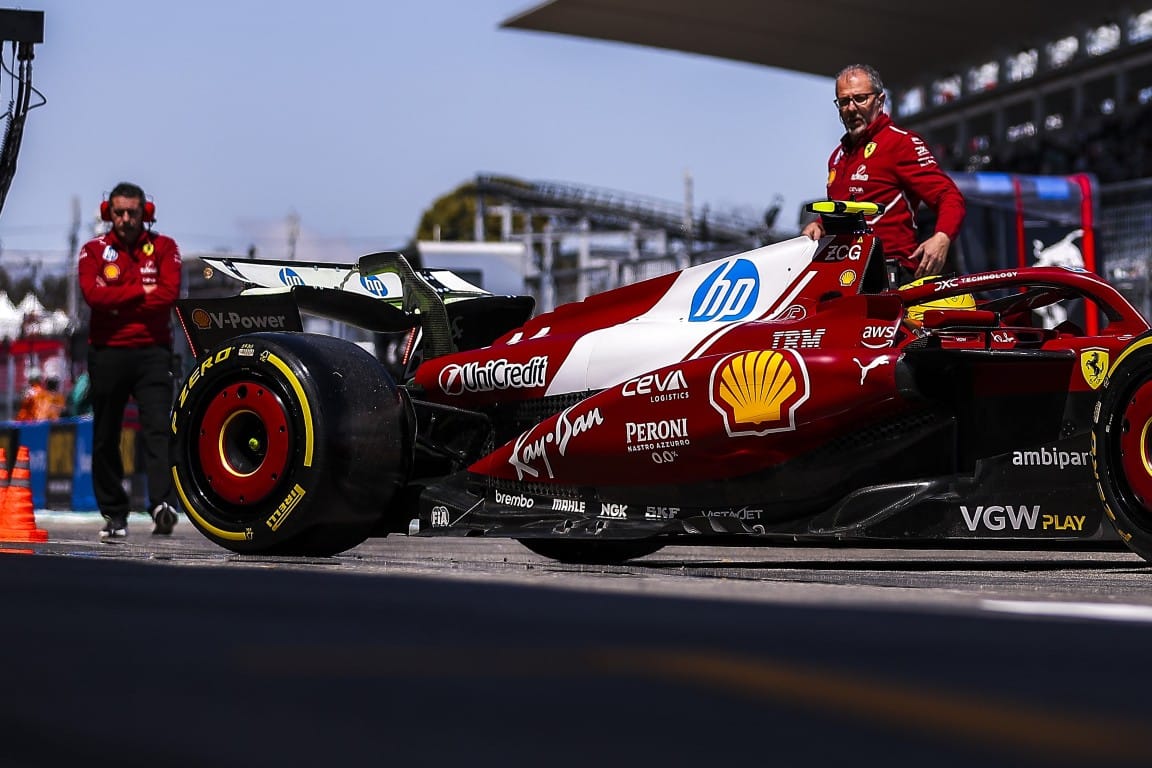
The compromises Ferrari has to make to operate the car for a heavy fuel load and the plank are not present for the sprint races - where cars have just 40kg of fuel on board and the plank only has to do one third of race distance.
So did Hamilton's Shanghai weekend, where he dominated the sprint but struggled in the grand prix with different settings, expose the reality of Ferrari's situation?
Has it got a car that is theoretically quick, but only in a configuration that can never be run in full grands prix because of the plank issue?
Soft suspension approach
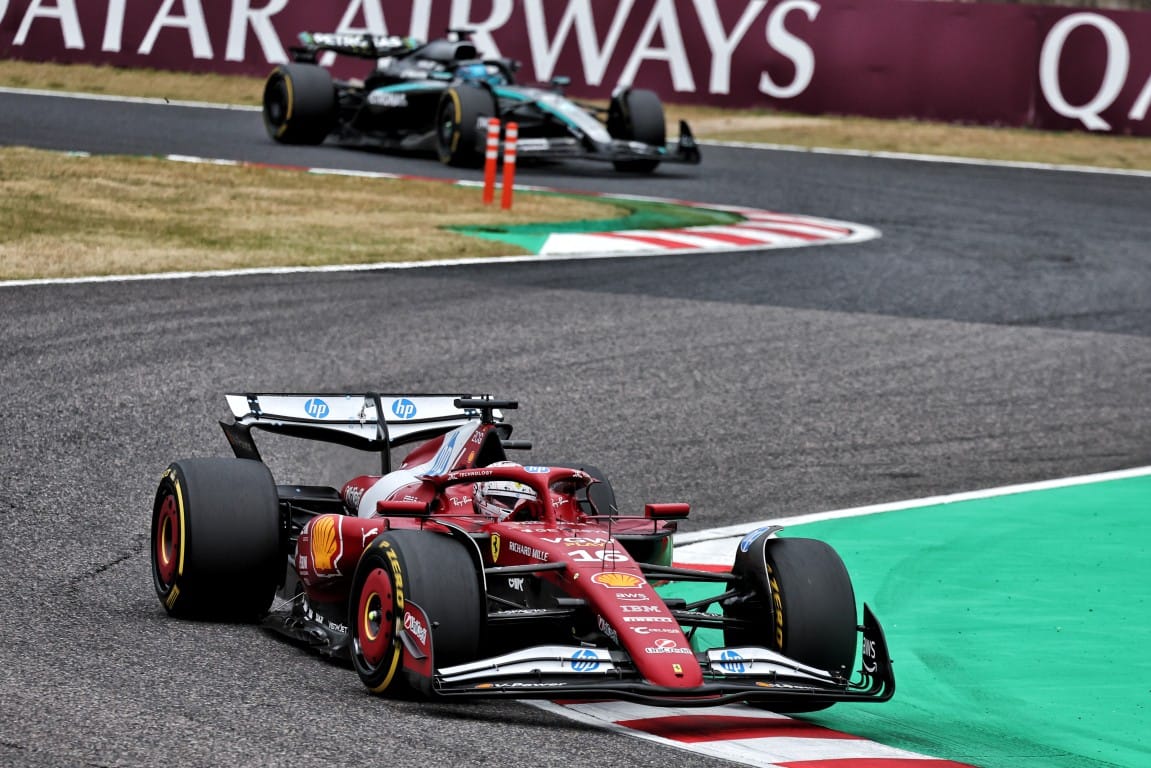
Ferrari has not offered many details on what its problems are, but there are some visual clues on offer that can perhaps give us some insight into what is going on with the SF-25.
The car appears to be running with a slightly higher rear ride height than others when stationary - which could be part of a concept aimed at improving its low-speed performance.
With what appears to be a slightly softer rear suspension approach than rivals (even though all the current cars are very stiff), this extra compliance gives the car good mechanical grip that helps its performance into slow corners.
However, there are two compromises here that Ferrari may be having to deal with.
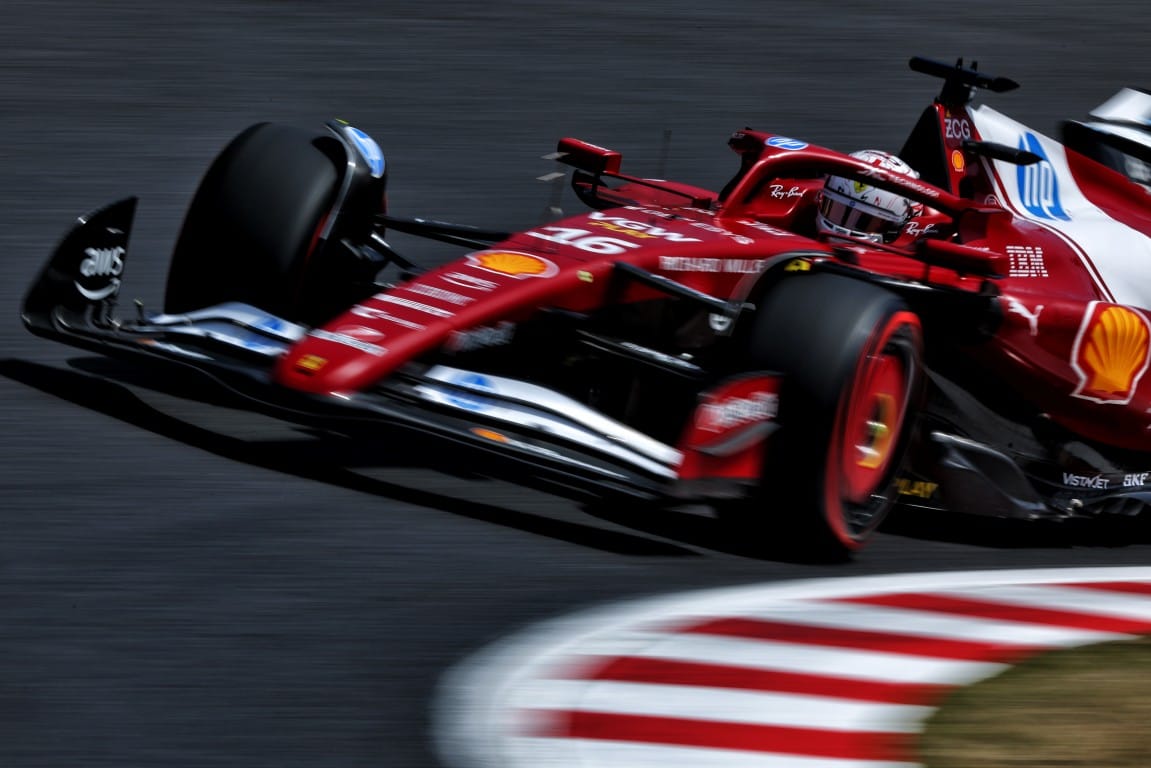
The first is that the softer suspension means that, as the downforce loads increase at higher speed, the car squats down at the rear and this is causing it to bottom out and rub the plank away.
It was notable in China that Hamilton's infringement was related to the rear skids being worn down too much.
There are two solutions to stopping the plank getting worn away like this. You can stiffen the suspension, but that then costs whatever performance benefit is gained in the low-speed corners.
Or you can raise the ride height so that when the car does squat down it does not bottom out - but this is not ideal for overall performance as the car is running further away from the ground so is producing less downforce at all speed ranges.
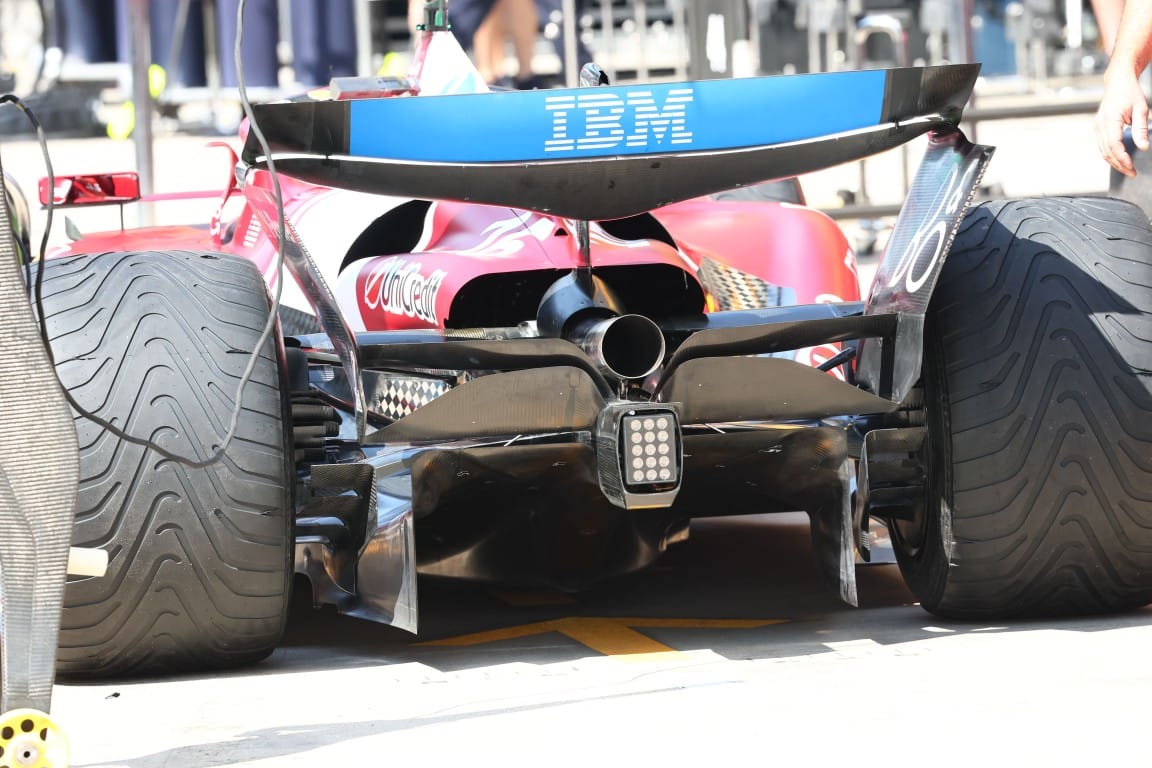
One theory that has emerged about a way that Ferrari is trying to compensate for this is by energising the airflow with a vortex generator in its floor to help improve things at low speeds (and high ride heights).
However, this could be further contributing to the problems of how the car sits down at high speeds and grinds down the plank.
It is plotting a path through these varying demands - of maintaining its low-speed advantage while not triggering a car that bottoms out too much at high-speed - that is understood to be key to Ferrari unlocking more performance.
Different approaches
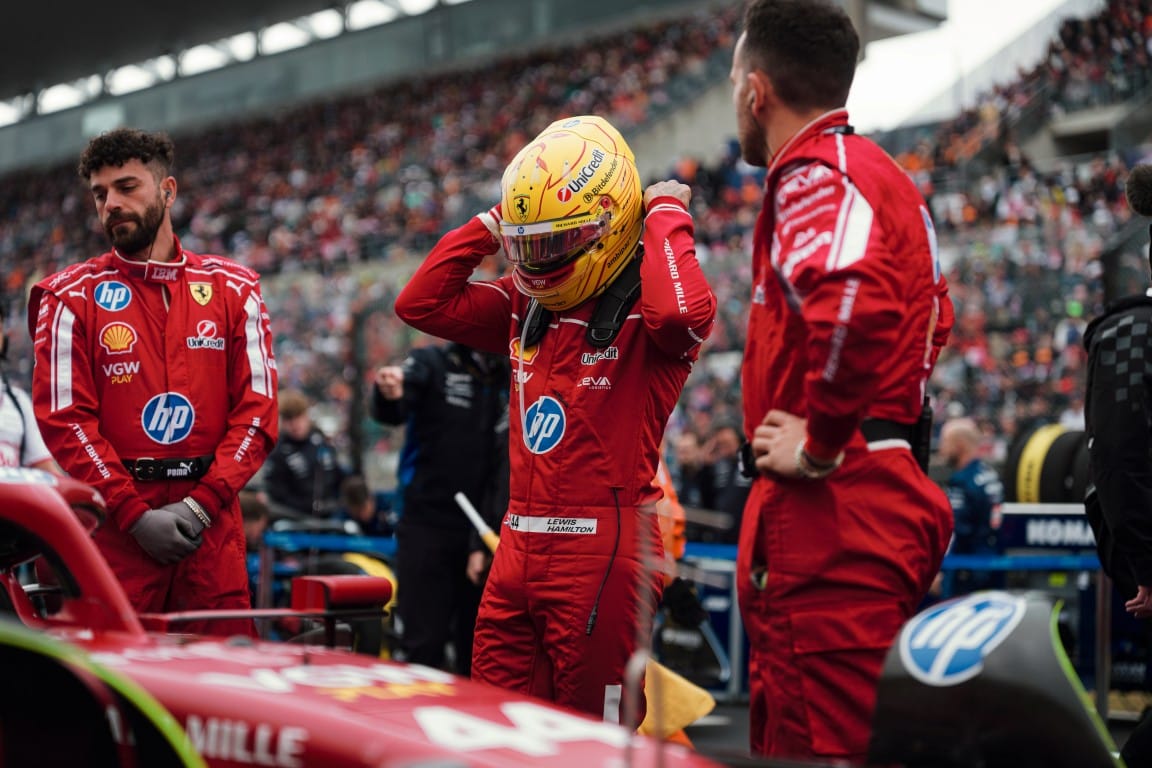
Finding a way through this has meant Ferrari's drivers have been diverging on set-up in recent races as they bid to find out ways to get the car in the window it needs to be in.
Hamilton is well-known for being happy to run the car low and stiff for maximum performance.
But that may have been the catalyst for what happened in China as he found a car that understeered in qualifying and then sat down too low in the race.
When the car was raised up for Japan, it was obvious that there was going to be performance left on the table - something Hamilton alluded to afterwards.
"We found something on the car that's been underperforming the last three races," he said. "I'm really hoping that when that's fixed, I'll start getting a bit better results.
"I'm losing just over a tenth a lap with this issue we have. I'm hoping in the next race it's fixed."
Those comments, while leaving a lot of room open for interpretation, are understood to have been related to the ride height issue of Ferrari having had to temporarily cure its problems by lifting the car.
A floor change that is rumoured for Bahrain could be the key to addressing things.
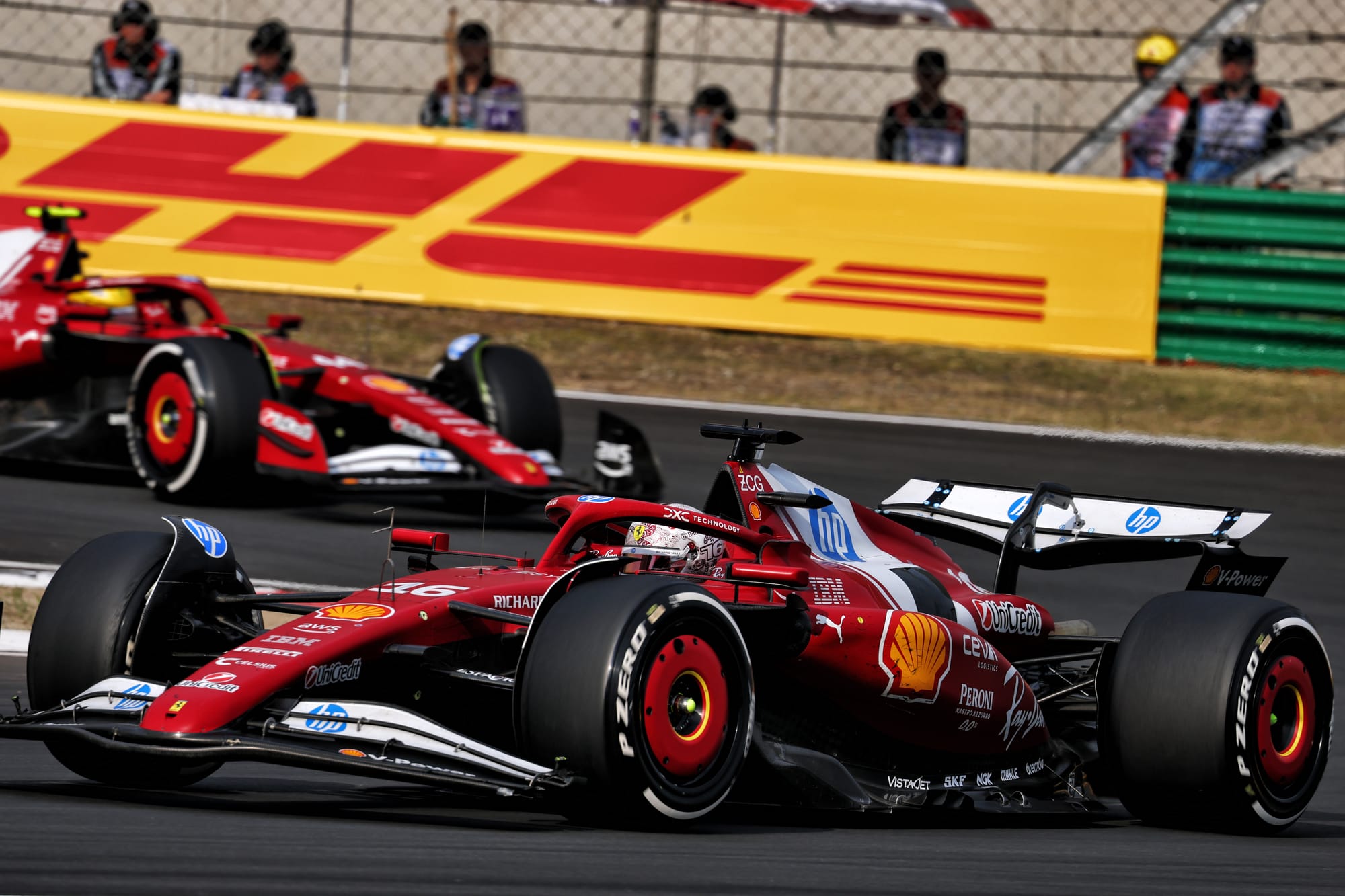
Hamilton also said that there were perhaps some understandings to be taken away from how Leclerc's broken endplate in China actually appeared to have helped him.
"What was interesting is the improved balance that Charles had with the damage to his car," said Hamilton. "It was fascinating to see."
Unlocking progress
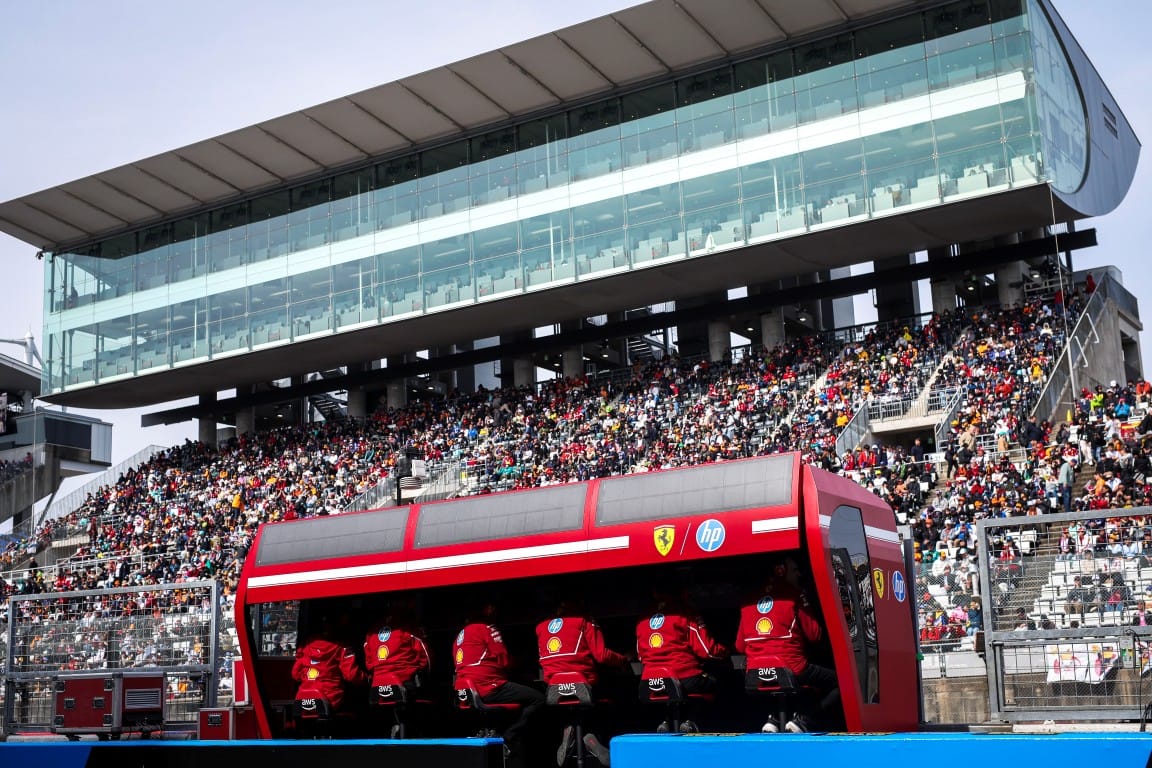
The view from the top level of Ferrari is that the SF-25 does not need a revolution to be in the hunt for wins - the team just needs to dig deeper to work out how to overcome the compromises it is facing at the moment.
Vasseur said: "You will never find something on the car at three-four tenths. Quite often when you improve it's because you are putting together 10 areas with 0.02-0.03s.
"You are putting everything together, you are improving on the balance, you are helping the driver get the best from the car."
Indeed if Ferrari can nail that balancing act between high and low speeds, which may well be a mixture of a new mechanical set-up approach and new aero characteristics from a revised floor, then the hope is that this will open up a rich seam of laptime.
Leclerc talked in Japan last weekend of having tried something in Friday practice that much better suited his driving style and has given him some cause for optimism.
We do not yet know what it was, but he seems to be quite upbeat about what he has found.
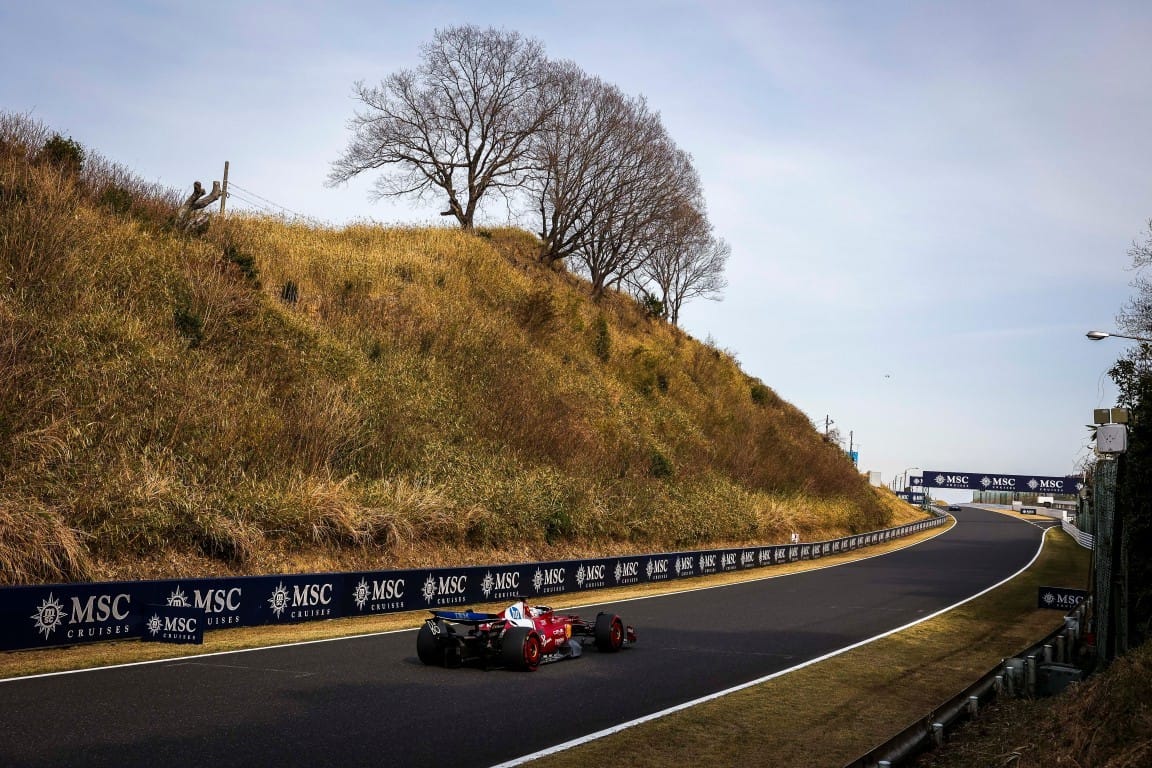
"I really went in quite extreme directions, in an idea that I've had for two or three weeks," he said. "I wanted to try it, and it worked out, so I was pretty happy with that."
But there is no pretending that this alone is going to get Ferrari straight to the front.
While Ferrari chases a way to optimise the balance across speed ranges and ride-height variations, it cannot escape the truth that it is still lacking ultimate performance compared to the frontrunners - and only an upgraded car will dig it out of this hole.
In Japan, Leclerc said the perfect race from him was still not enough to match the Red Bulls and McLarens ahead - and more aero load is a necessity if it is to launch a title fight.
"It's not really how sensitive the ride heights are or where we are standing with the ride heights," he reflected.
"It's just that we are not fast enough, and we don't have enough grip to match what McLaren and Red Bull are doing in the corners."
It is clear Ferrari needs to find gains. And do it quickly.

